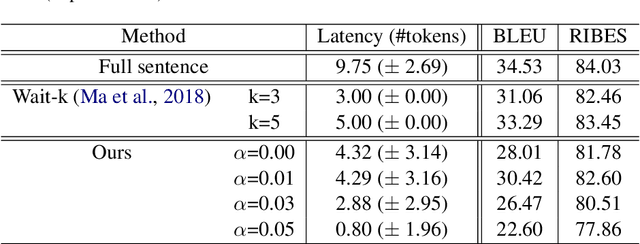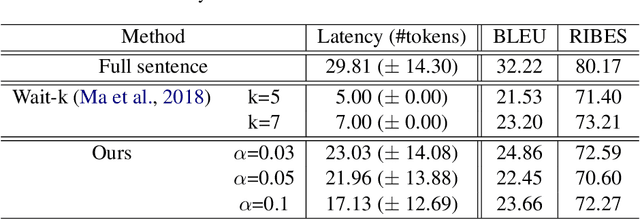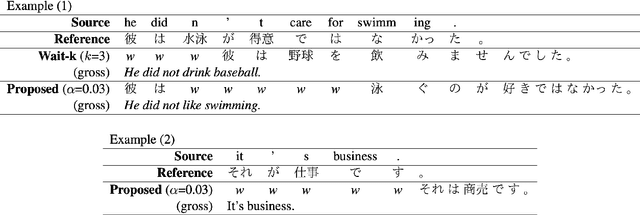Simultaneous Neural Machine Translation using Connectionist Temporal Classification
Paper and Code
Nov 27, 2019



Simultaneous machine translation is a variant of machine translation that starts the translation process before the end of an input. This task faces a trade-off between translation accuracy and latency. We have to determine when we start the translation for observed inputs so far, to achieve good practical performance. In this work, we propose a neural machine translation method to determine this timing in an adaptive manner. The proposed method introduces a special token '<wait>', which is generated when the translation model chooses to read the next input token instead of generating an output token. It also introduces an objective function to handle the ambiguity in wait timings that can be optimized using an algorithm called Connectionist Temporal Classification (CTC). The use of CTC enables the optimization to consider all possible output sequences including '<wait>' that are equivalent to the reference translations and to choose the best one adaptively. We apply the proposed method into simultaneous translation from English to Japanese and investigate its performance and remaining problems.
 Add to Chrome
Add to Chrome Add to Firefox
Add to Firefox Add to Edge
Add to Edge